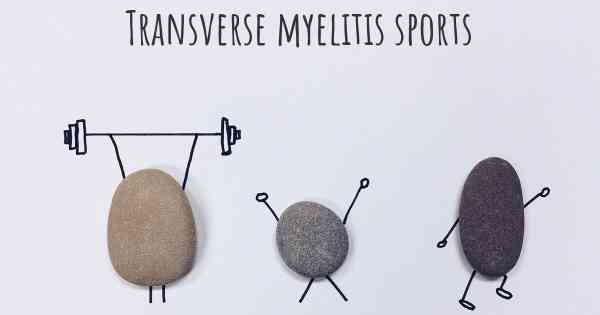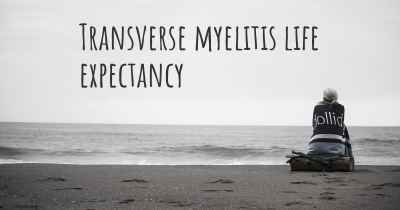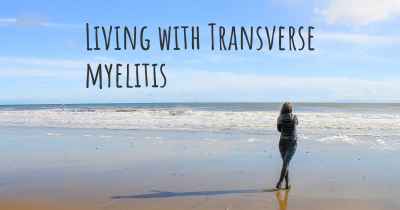Is it advisable to do exercise when affected by Transverse myelitis? Which activities would you suggest and how intense should they be?
See if it is advisable for people with Transverse myelitis to practice sports and which ones are the most recommended if you have Transverse myelitis

Exercise Recommendations for Transverse Myelitis
Transverse myelitis is a neurological condition that affects the spinal cord, causing inflammation and damage to the nerve fibers. It can result in various symptoms such as weakness, numbness, pain, and difficulty with coordination and balance. Engaging in regular exercise can be beneficial for individuals with transverse myelitis, but it is important to approach it with caution and follow certain guidelines.
Benefits of Exercise
Exercise can have several positive effects on individuals with transverse myelitis:
- Improved strength and mobility: Regular exercise can help strengthen muscles, improve flexibility, and enhance overall mobility.
- Pain management: Certain exercises and physical activities can help alleviate pain associated with transverse myelitis.
- Enhanced cardiovascular health: Engaging in aerobic exercises can improve heart health and overall fitness.
- Mental well-being: Exercise has been shown to boost mood, reduce stress, and improve overall mental well-being.
Exercise Recommendations
When considering exercise with transverse myelitis, it is crucial to consult with a healthcare professional or physical therapist who can provide personalized recommendations based on your specific condition and abilities. However, here are some general exercise guidelines:
1. Low-Impact Aerobic Exercises
Low-impact aerobic exercises are gentle on the joints and can help improve cardiovascular fitness without putting excessive strain on the body. Some suitable options include:
- Walking
- Stationary biking
- Swimming or water aerobics
- Elliptical training
Start with shorter durations and gradually increase the time as tolerated. Aim for at least 150 minutes of moderate-intensity aerobic exercise per week, spread across several days.
2. Strength Training
Strength training exercises can help improve muscle strength and overall function. It is important to focus on proper form and start with light weights or resistance bands. Some suitable exercises include:
- Leg presses
- Seated or standing leg curls
- Arm curls
- Shoulder presses
Perform 1-3 sets of 10-15 repetitions for each exercise, 2-3 times per week. It is advisable to work with a physical therapist to ensure proper technique and progression.
3. Flexibility and Stretching
Stretching exercises can help improve flexibility, reduce muscle stiffness, and enhance range of motion. Incorporate gentle stretching exercises for major muscle groups, holding each stretch for 15-30 seconds. Yoga or tai chi can also be beneficial for improving flexibility and balance.
4. Balance and Coordination Exercises
Transverse myelitis can affect balance and coordination, so it is important to include exercises that target these areas. Some examples include:
- Standing on one leg
- Balancing on a wobble board
- Using a balance ball
- Practicing heel-to-toe walking
Start with support and gradually progress to more challenging exercises as balance improves.
Exercise Intensity
The intensity of exercise should be tailored to individual abilities and limitations. It is important to listen to your body and avoid overexertion. Begin with low to moderate intensity exercises and gradually increase the intensity as tolerated. If any pain, discomfort, or unusual symptoms occur during or after exercise, it is essential to consult with a healthcare professional.
Precautions
While exercise can be beneficial, individuals with transverse myelitis should keep the following precautions in mind:
- Avoid high-impact activities that may put excessive stress on the spine and joints.
- Use assistive devices or support as needed to ensure safety during exercise.
- Stay hydrated and maintain a comfortable temperature during exercise, as heat sensitivity can be a symptom of transverse myelitis.
- Take breaks and rest when needed to prevent fatigue.
- Always consult with a healthcare professional before starting or modifying an exercise routine.
Conclusion: Exercise can be beneficial for individuals with transverse myelitis, promoting strength, mobility, pain management, cardiovascular health, and overall well-being. However, it is crucial to consult with healthcare professionals and follow personalized recommendations. By incorporating low-impact aerobic exercises, strength training, flexibility exercises, and balance and coordination exercises, individuals with transverse myelitis can safely engage in physical activity to improve their quality of life.
Any type of exercise that will help strengthen the muscles that have begun to atrophy.
Aqua therapy helps those that have significant balance issues as it helps with buoyancy. Helps lift weight off of the legs.
Posted Aug 16, 2022 by Transverse Myelitis Folks Blue Crew
Posted Feb 23, 2017 by Nancy 715
Posted Feb 23, 2017 by Jen 1001
Posted Feb 23, 2017 by Cathy 1000
Other simple exercises to help the body normalise may be prescribed.
After the body has recovered from the inflammatory stage there may be muscle weakness, however it is important that the body does not try to compensate for weakness in one area by developing other muscles as this could cause more pain in the future.
In the UK neuro physiotherapy may be difficult to access, however the TM society to offer bursaries to help sufferers access a physio.
Posted May 17, 2017 by Marella Cairns 1050
Posted May 17, 2017 by Justin 1152
Posted Jul 24, 2017 by Hagen 2730
Posted Jul 25, 2017 by Mindy 2000
Stretching of the affected limbs is important to avoid atrophy. Some weight bearing is advisable with assitance or assistive devices such as standing frames or leg braces.
Upper body strengthening is priority to assist with independance for transferring in and out of wheelchair from bed to bath and car.
Posted Jul 25, 2017 by Conrad 2200
Posted Sep 10, 2017 by Amy 600
Posted Sep 29, 2017 by Samantha Bryce 2065
Posted Oct 6, 2017 by Chuck 2000
Posted Nov 30, 2017 by mikado54mark 3150
Posted Feb 27, 2018 by Gill 1800
Posted Jun 1, 2018 by Clay Garner 2500
Posted Jun 1, 2021 by Gary 3550
Any type of exercise that will help strengthen the muscles that have begun to atrophy.
Aqua therapy helps those that have significant balance issues as it helps with buoyancy. Helps lift weight off of the legs.
Posted Aug 17, 2022 by Kevin Weilacher 3420
Posted Aug 17, 2022 by gloria_kazan 7450
Posted May 29, 2017 by Adriana E. 2000
Posted May 29, 2017 by Leandro 2200
Posted Aug 8, 2017 by Dani 2000
Posted Nov 8, 2017 by Lorena 3050








